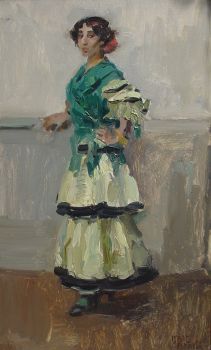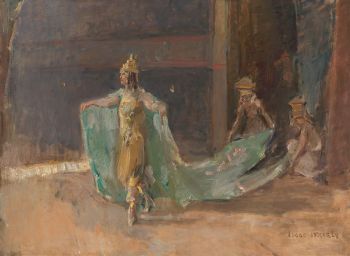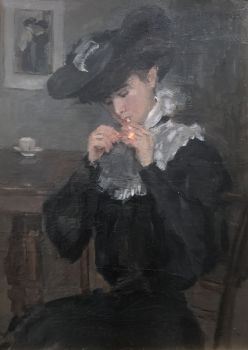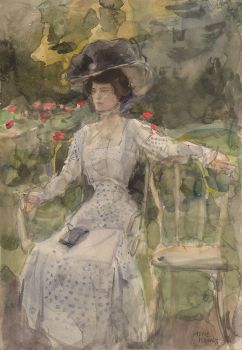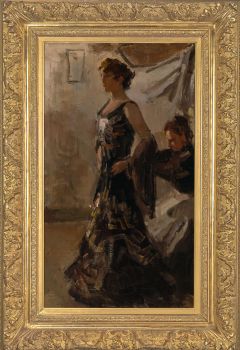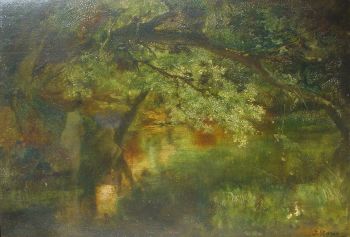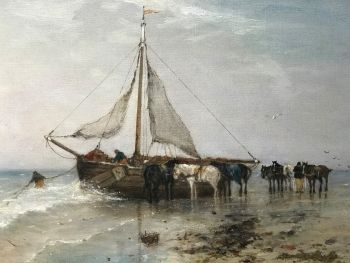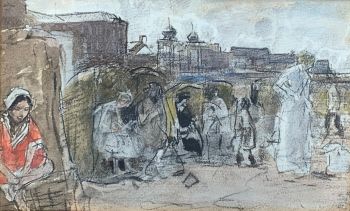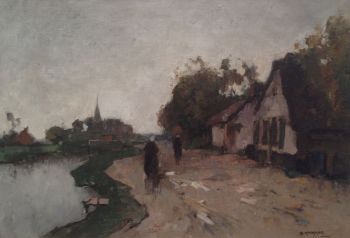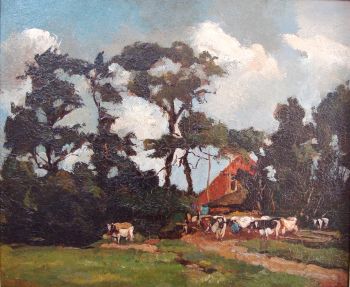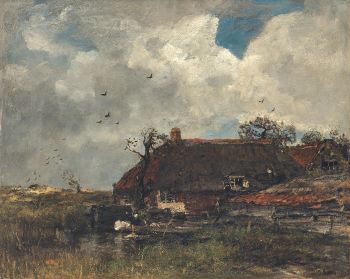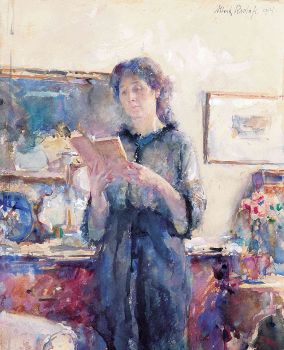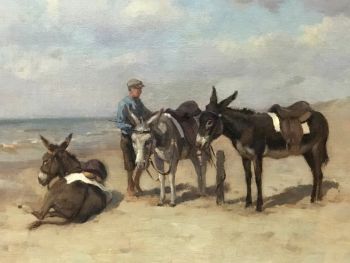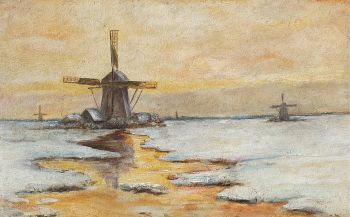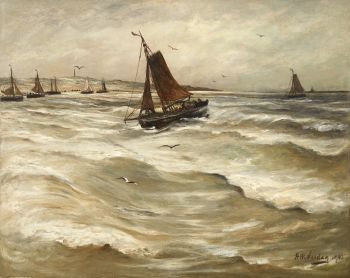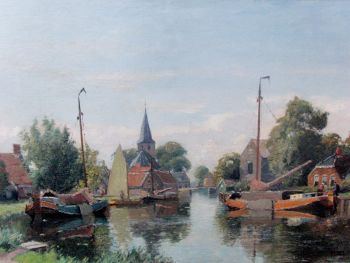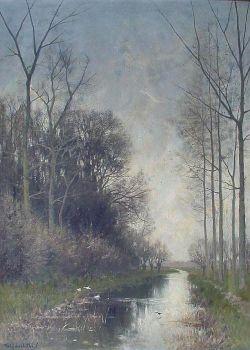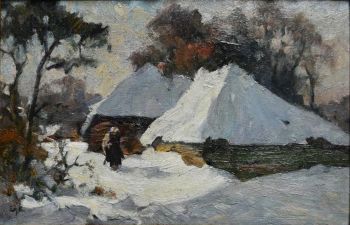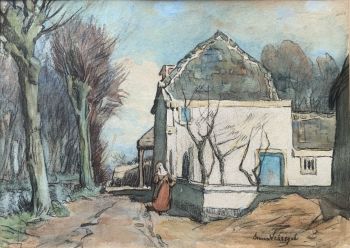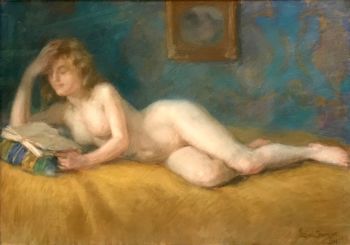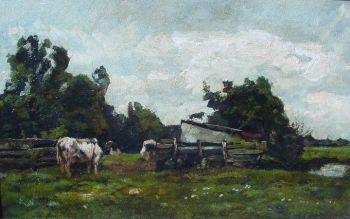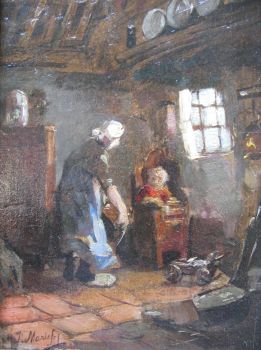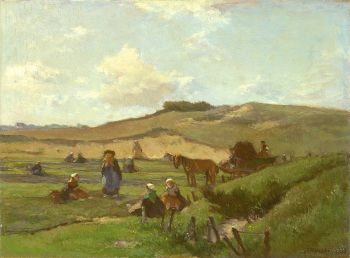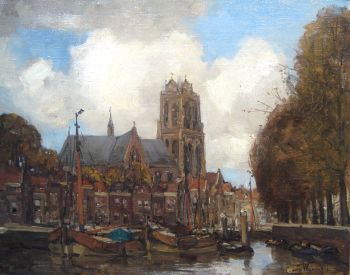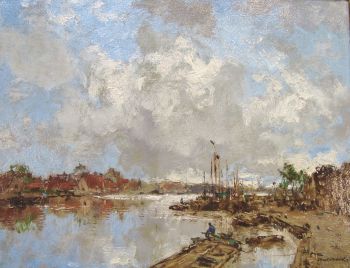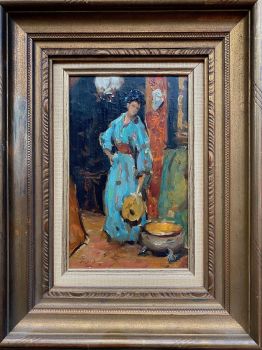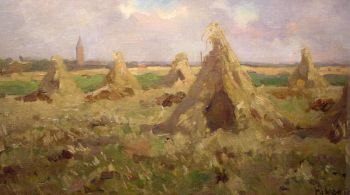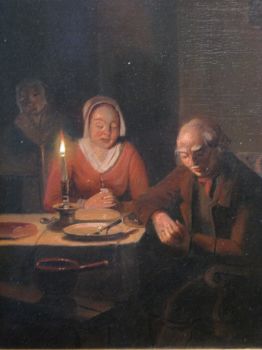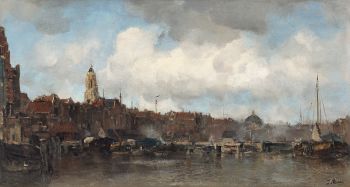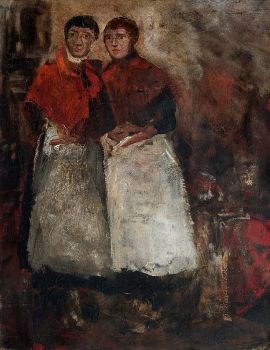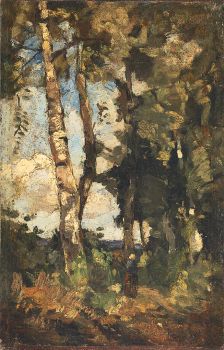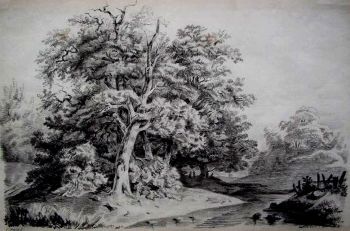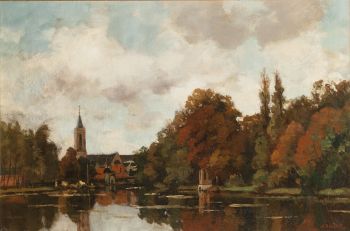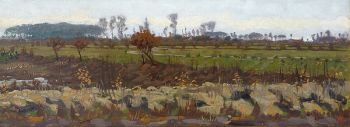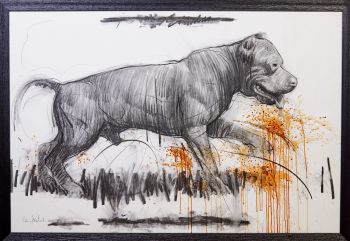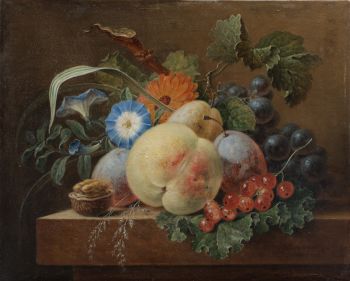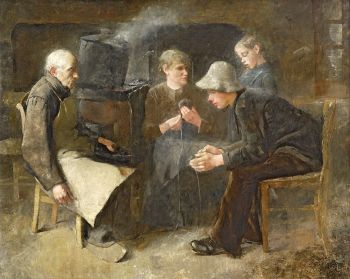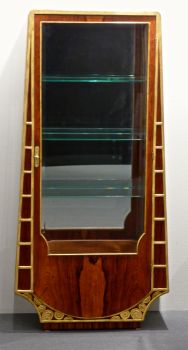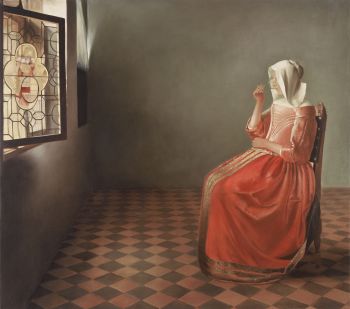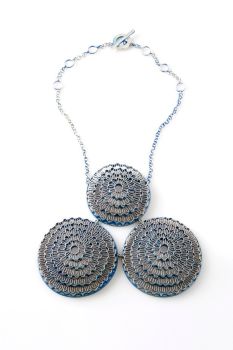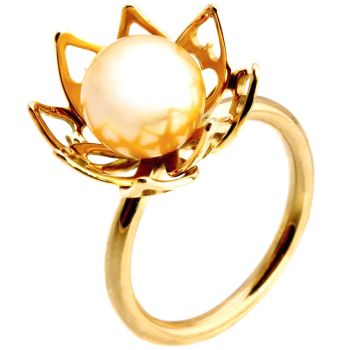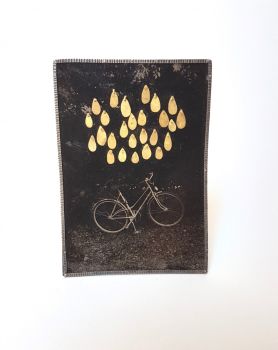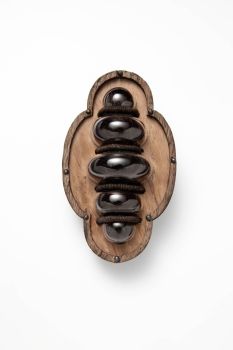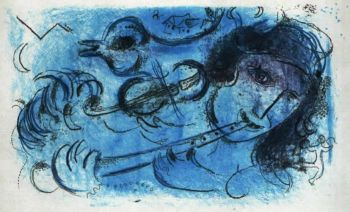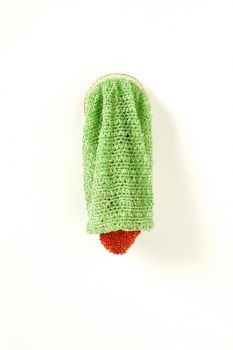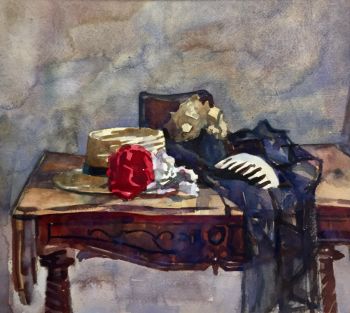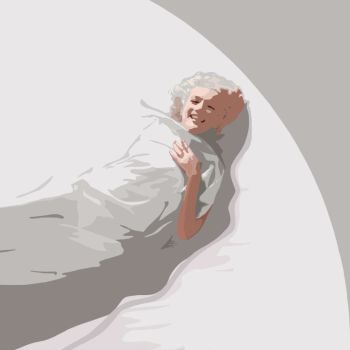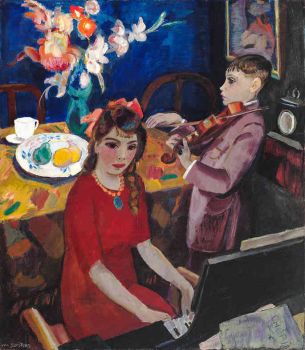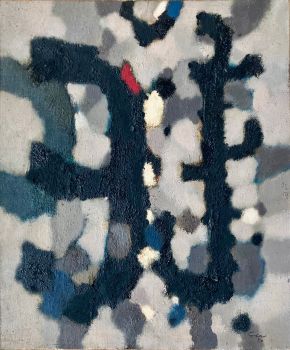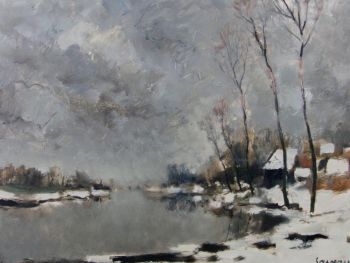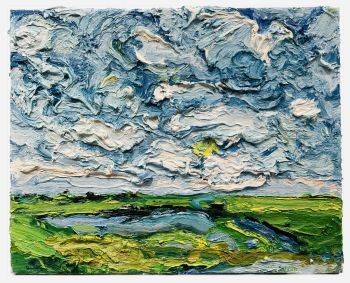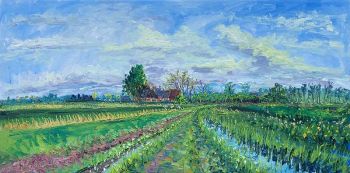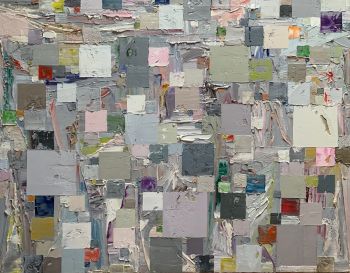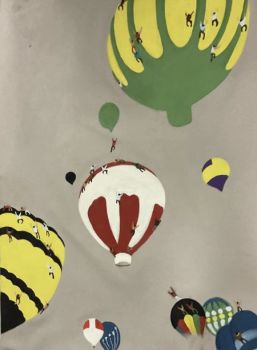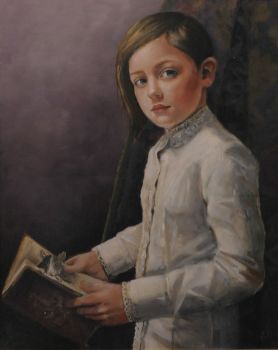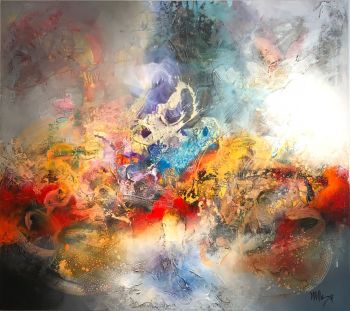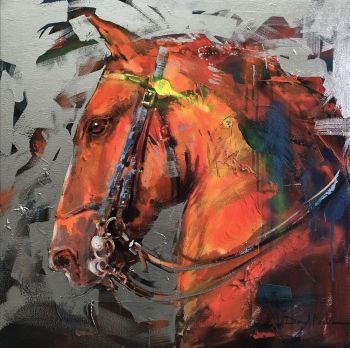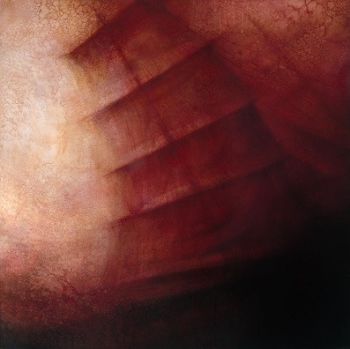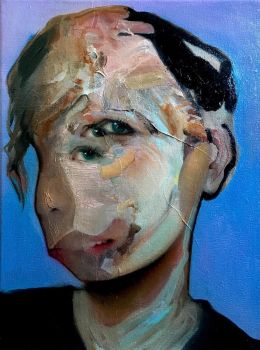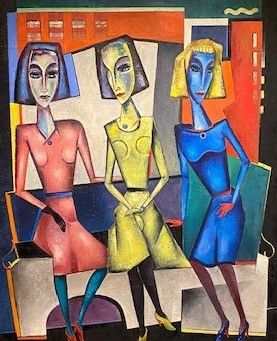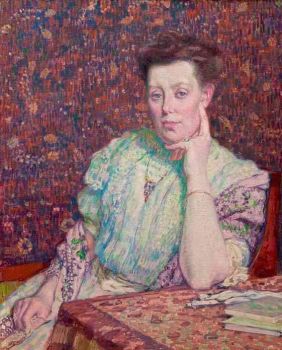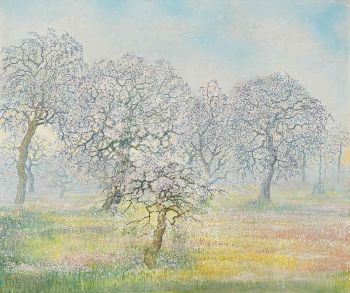The Balalaika Players 1890 - 1910
Isaac Israels
Óleo sobre lienzo original
79 ⨯ 62.50 cm
ConditionExcellent
Actualmente no disponible a través de Gallerease
- Sobre la obra de arteJozef Israëls’s son, Isaac Israëls was raised on a diet of painting and travel. At thirteen, he entered art school in The Hague, where his prodigious talent was soon noticed. In 1881, he began a painting that was purchased before it was completed by Hendrik Willem Mesdag. In 1886, Israëls enrolled at Amsterdam’s Art Academy, where he was considered ‘too good’.
Israëls often spent the summer months with his father in Scheveningen, where he painted seaside scenes in bright colours. In Amsterdam, Israëls spent much of his time with George Hendrik Breitner. Both were fascinated by the idea of portraying city life by capturing a passing moment in time. To convey the sense of a snapshot, they cropped their subjects abruptly. Israëls was in Paris, London and briefly in the Dutch East Indies from 1903 to 1923. He then returned to The Hague and took over his father's studio. There he remained, producing impressionist paintings in light colours.
Israëls was a frequent visitor to theatres and concerts, which allowed him to depict the vivid lives of artists of all genres from all around the world. This painting portrays two folk artists from the cossack orchestra, which performed in Paris around 1910. - Sobre el artista
Isaac Israels nació en Amsterdam en 1865, hijo del pintor Jozef Israels. Al principio de su vida, su familia se mudó a La Haya. Durante su vida como artista, Isaac cambió la paleta "gris" de la escuela Haagse (la escuela de La Haya) por una paleta más colorida y viva. Israels se asoció con el movimiento impresionista de Amsterdam. Entre 1880 y 1882 estudió en la Real Academia de Arte de La Haya, donde conoció a George Hendrik Breitner, quien se convertiría en un amigo de toda la vida. Regresó a Amsterdam, donde se le pidió que se uniera a los Kring der Tachtigers (el grupo de los ochenta). Paisajes urbanos con la vida callejera de Ámsterdam y París, damas de moda, los interiores de cafés y talleres de costura se encuentran entre sus escenas más populares. Se le considera uno de los impresionistas holandeses más importantes. Isaac Israels murió en 1934 en La Haya.
Artwork details
Related artworks
- 1 - 4 / 12
Aris Knikker
Riverview with a village (Kortenhoef, Netherlands)1887 - 1962
Precio a consultarKunsthandel Pygmalion
Bernardus Johannes Blommers
Het bereiden van de maaltijd1870 - 1914
Precio a consultarStudio 2000 Art Gallery
Hendrik Willem Mesdag
SCHEVENINGEN, VISSERSSCHEPEN VOOR DE KUST 1903
Precio a consultarGalerie Het Noorderlicht
Fredericus Jacobus van Rossum du Chattel
Poldervaart in the Vecht river region1899 - 1901
Precio a consultarKunsthandel Pygmalion
Johannes Evert Akkeringa
'Nettenboetsters' in the Dunes1861 - 1942
Precio a consultarStudio 2000 Art Gallery
1 - 4 / 24Gijsbertus Jan Sijthoff
Interior scene with a woman doing needlework1890 - 1920
Precio a consultarVan der Aalst Fine Art
1 - 4 / 24- 1 - 4 / 24
- 1 - 4 / 24




